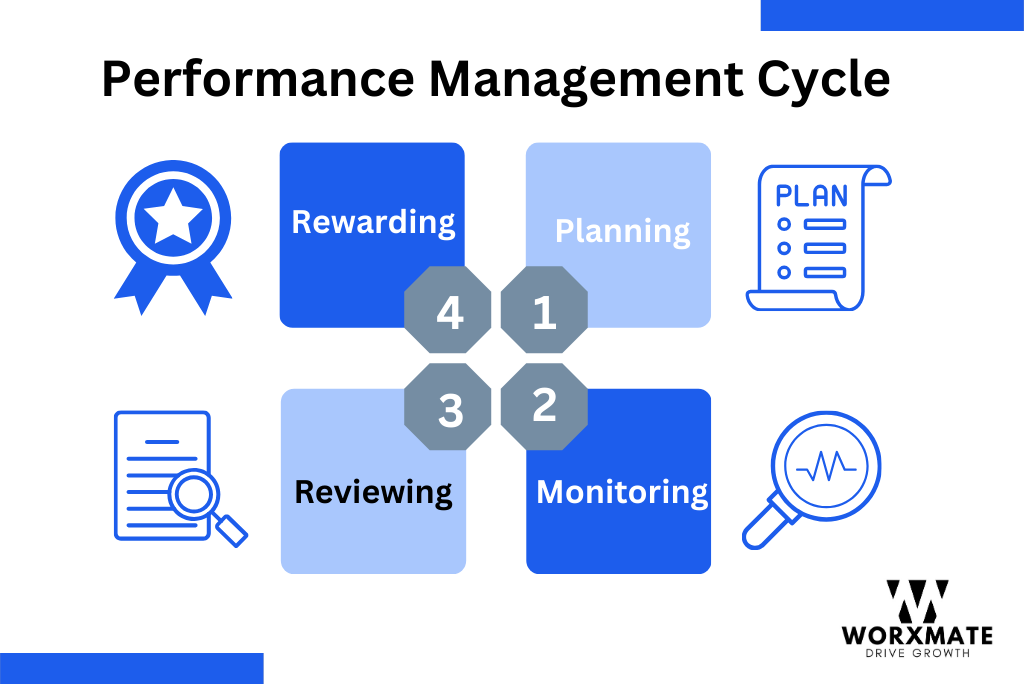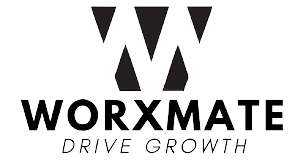Driving employee performance is an important aspect of business management. The utilization of human capital is critical for the desired outcome. A company’s failure to communicate, provide feedback, evaluate performance, and set goals can lead to major problems. If human capital is not properly managed, the results are subpar.
The Performance Management Cycle is a useful tool that any firm may use to improve its productivity. The Performance Management Cycle is a method that helps a corporation improve organizational effectiveness by enhancing individual and team performance.
It is responsible for providing continuing support, evaluation, and feedback to employees in order to better their development and match them with the company’s primary goal.
Most of the companies suffer because of lack of clarity in their vision, team cooperation, systematic work, and many more. These issues can be solved through Performance Management Cycle.
As per Bridge we understood that 44% of the HRs uses Performance Management Software to meet their organizational goals. Most of the companies suffer because of lack of clarity in their vision, team cooperation, systematic work, and many more. These issues can be solved through Performance Management Cycle.
A Performance Management Cycle has four steps through which the problems can be delt with: –

Performance Planning: Goal Setting and Team Alignment
Goal setting focuses on clear, measurable, and achievable objectives. Setting goals automatically brings in alignment and discipline and thus increases productivity. Goal setting provides a roadmap to the employees, clearing the path for helpful performance evaluations, insightful criticism, and continual improvement.
Once the goal has been set, aligning teams becomes important. Every employee needs to be aware of everything what is happening in the company. This is a tactics for better communication and cooperation amongst the teams to achieve a unifying goal. It also increases the work morale.
But it can also cause unintended competition among team members. Unhealthy rivalry between team members may result when individual performance is excessively highlighted without a clear focus on collaborative team accomplishments. Team unity declines as they start to outperform each other.
Continuous Monitoring: Regular Check-In and Progress Tracking
In an effective performance management continuous monitoring helps to move forward. Regular progress tracking and check in opens a door for communication, resolves issues fast and gives regular feedback. It gives room for improvement. With regular monitoring objectives gets adjusted as per the market condition.
But continuous monitoring can create a high-pressure environment where employees feel constantly scrutinized. It also consumes a lot of time and effort.
Performance Reviewing: Evaluation, Feedback, Training and Development Needs
Performance Appraisal is a continuous review of an employee’s job performance and their contribution to the company. Through performance appraisal systematic evaluation, feedback, assessment, and goal setting can be done.
It analyses an employee’s strength and weaknesses and provides with important feedback that will eventually bring improvement. As per SHRM, 71% of companies conduct performance reviews on an annual basis. Training and Development is an important to enhance skills that would provide benefit for an employee.
It also has a drawback as Havard Business Review says that 66% of the workers expressed extreme dissatisfaction with their company’s performance reviews as they can be biased based on personal preferences. They do not like negative feedback based on their work.
Rewarding and Recognition:
Rewards and recognition play a vital role in increasing efficiency. This also reinforce positive behaviours. This acknowledgement can come in a variety of forms, such as vocal praise, written appreciation, or tangible rewards like bonuses, promotions, or exclusive access. They can also provide with salary boost, performance bonus, enhanced holiday allowance, a promotion, positive written feedback, and public recognition.
In this case sometimes a more deserving person does not get their justified reward, instead somebody else gets that reward. It can cause because of favouritism.
Thus, we understand that most crucial problem that a company can face who uses performance management systems is team alliance and visibility. So, to solve this problem we can provide you with one of the best solutions i.e., Objective and Key Results (OKRs).
What is an OKR?
Objectives and Key Results (OKRs) is a goal-setting framework that helps a company to a attain their intended goals and key results are measurable outcomes, fostering alignment and focus within organizations.
OKRs aligns teams around a common objective which brings in collaboration. The objectives and key results are shared among every member in the company which brings transparency, and everybody understands their role through which they can contribute to those shared objectives.
Because of the transparency in OKRs everybody can give feedback to one and another and this enhances communication and lack of misunderstandings. So, by using an OKR software the teams can have a sense of ownership regarding their role as well as have a collaborative team spirit it achieves the organizational goals.
Case Study
In order to give you more insight on OKRs, here is a case study of LinkedIn that would help you to understand this framework:
LinkedIn:
LinkedIn also utilizes OKRs to reach to their goal. This has helped them to become a $20 billion company in a limited time. According to LinkedIn CEO Jeff Weiner, companies should provide their leaders clear instructions since the greatest places require clear vision and purpose statements.
He claims that to be a good leader one must motivate his team, set clear objectives, and measure key results. Jeff Weiner believes that OKRs must achieved within a small-time span. He prefers that there be three to five OKRs in a quarter.
He takes up regular weekly meetings for 3 hours to understand his employee’s performances and how they are working towards their objectives. He motivates them to do good work.
Conclusion
Thus, performance management cycle is an essential tool to achieve a company’s success. The steps that are planning, monitoring, reviewing, and rewarding helps to structure a company’s growth. It helps in utilizing the human capital effectively and provides a constant room for improvement and problem solving.
This model increases productivity and provides employee’s satisfaction, long term expansion and an overall success. But it also has its own drawbacks to support this performance management cycle in a company, a company can implement OKRs. OKRs will then help with the purpose of measuring their performance or rather key results in a more efficient way which is structured and clear. This is also less time consuming and more structured.



